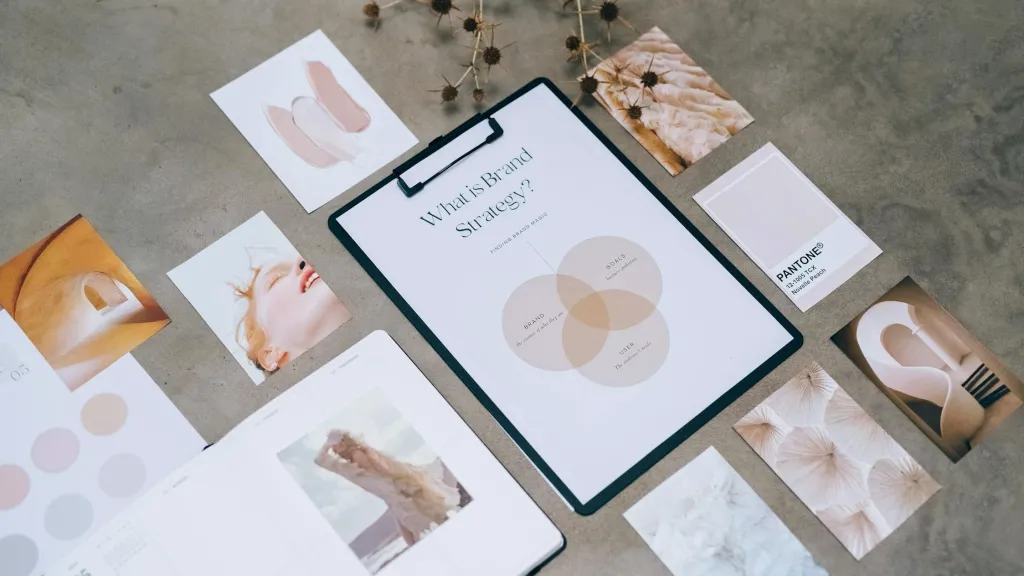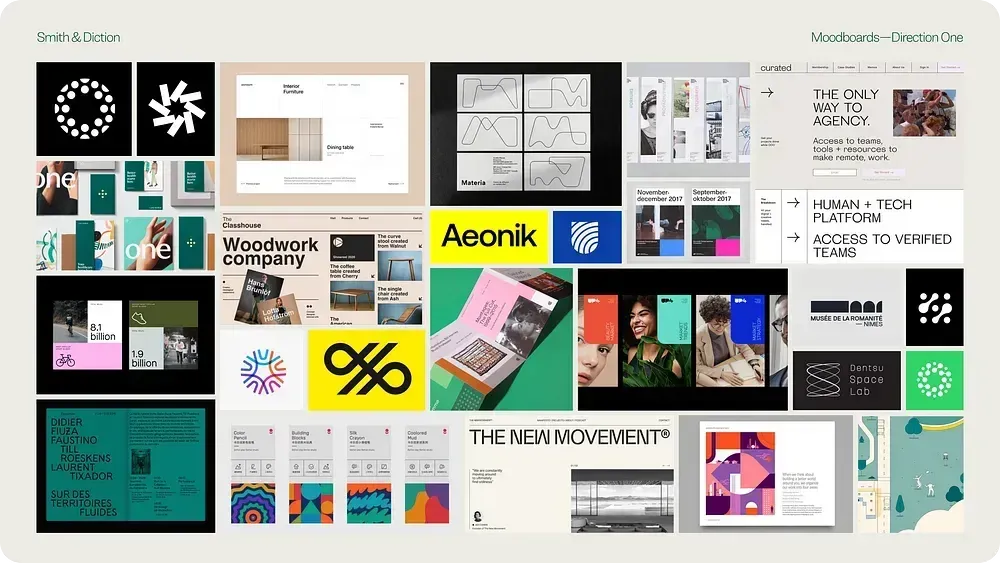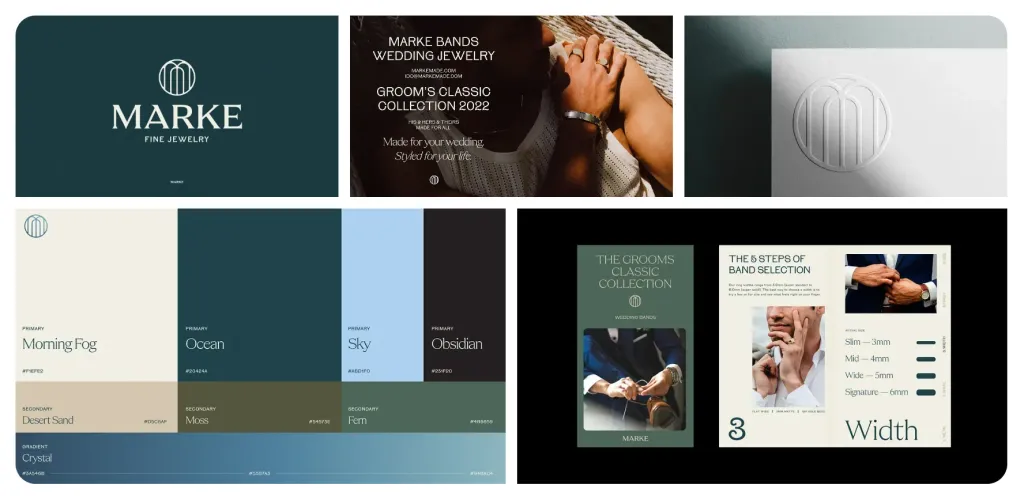Developing a brand identity. Step-by-step development plan.

Identity is the visual identity of the brand that makes the brand recognizable. In today’s article, the team of a successful American design agency Smith&Diction shares its professional secrets. You will learn how the work process is organized and with what stages it consists of. This step-by-step plan is a great cheat sheet to help you work on your own projects.

Step 1. Preliminary meeting
The basis of our process is communication. Working with us involves many casual but important discussions of honest opinions and hidden creativity. Choosing partners is a delicate task, but for us it all boils down to a question of trust. We choose those whose vision we believe in and, in turn, ask them to believe that we will treat their brand as if it were our own.

Before starting a new project, we start with a short conversation. It’s a chance to get to know each other as well as understand the scale and project goals. At this stage, the client says a lot, we listen a lot.
What questions do we usually ask:
- How did you find out about us?
- What do we need to know about your company?
- What are your expectations regarding the new branding? Where should he take you?
- Why did you decide to change your identity?
Step 2. Commercial offer
As soon as we understand what the client wants, we plan the budget and timeline of the project. It is at this stage that a person can get a clear idea of the work ahead, and add or remove something from the to-do list so that the collaboration meets her needs and financial opportunities.
Our offer includes:
- Amount of work
- Estimated terms
- Estimated cost

All these points are subject to discussion and may be adjusted.
Step 3. Contract and advance payment
As soon as we received the green light to start the project, we sign the contract and take the advance payment. We usually ask an advance in the amount of 50% of the project cost. This ensures that both parties will be equally interested in the project from the start. Other payments are distributed as the work progresses.
So, we need the following documents:
- Contract
- Terms of reference (detailed description of scope of work)
- Initial invoice

Step 4. Data collection
We start each project with an open, friendly introduction. We don’t waste time on what if questions you were a machine, then what kind of one.” Our goal is simply to listen to each stakeholder, trying to learn as much as possible about company, work, brand, interests and views of the client, as well as about his needs, likes, dislikes, goals and expectations from our joint work.
During the introductory conversation, we ask the following questions:
- Who are your main competitors?
- Who is your target audience?
- What should your brand convey?
- What goals do you want to achieve with the help of branding?
- What brands or companies do you admire?

Step 5. Moodboards
Our process is built on trust and cooperation. We are partners who work together. Therefore, before investing time and energy in creativity, we always try to make sure that we are on the same page with the client.
We can imagine the same characteristics and concepts, for example, “luxury”, in completely different ways. That’s why we create moodboards are inspiring selections of visual images that allow us to reach a common denominator. We find out what the atmosphere is like fits the brand, and then we use the moodboard as a guide throughout the creative process.
This stage is one of our favorite moments in building a brand because it opens up an endless sea of possibilities. We share with all the ideas we have, and the client honestly answers what he likes and what he doesn’t. Here are some moodboards that we recently created:



Step 6. Development of identity
After the approval of the moodboard, the design begins directly. Usually to create the first variant of corporate style it takes about four weeks — it all depends on the scale of the project, schedule, etc. This is the only “hidden” period of our process: the client can rest a little while we work on the implementation of ideas.
Step 7. “Brandwork”
We make every effort to ensure that the identity we create has both strength and flexibility. For this, before sharing with result of the client, we test each branding option in practice. We design several relevant media that show how all the elements of the new identity work together. We call it “brandwork” because this kind of design is meant to show the brand in action.

This stage is very important, it allows you to understand how the font, colors and logo will look in different contexts. But no confuse brandwork with final, ready-to-implement files! We can create invitations for a fictional event or landing page with “fishy” content. Details are only needed to make the design look realistic, and we get it like everyone else branding elements work together. This helps to decide in which direction to move further.
What can brand work include?
- Printed materials - posters, brochures, postcards, etc.
- Digital materials – avatars, social media posts, emails, presentations, etc.
- Packaging.
- Signs - banners, signs, neon, etc.
- Merch - bags, T-shirts, hats, cups, etc.
- Landing
Step 8. Presentation
Most often, we develop 2-3 versions of the identity. We prioritize quality over quantity and work hard to each option could really meet the needs of the brand.
We present logos, identity elements and brand work as a whole - and ideally to all stakeholders at once. Yes we can analyze all primary reactions. After the meeting, we send the client a PDF file with all the materials for further analysis and discussion.

Step 9. Feedback and edits
Usually, the project includes two stages of editing. If there is a need for additional refinements, we can make them separately fee - thanks to this approach, feedback remains clear and concise, which saves time and effort of all participants process
To make it easier for the client to evaluate identity options, we give him the following recommendations:
- Live with each option - set the logo to your lock screen and you’ll see it every time you pick up your phone.
- Remember the audience - you may not like what works best.
- Gather stakeholders — let all decision-makers have their say on the changes.
Step 10. File transfer
We usually provide the client with the logo in various formats, all the key design elements we have created, and a manual with style Often this is the moment when we start working on additional materials, for example, a website, merch, templates presentations, printed materials, etc.
Materials we usually send to the client:
- Logo in all required formats – ai, png, svg, jpg, etc.
- Any identity elements created by us - patterns, icons, etc.
- Cheat sheet for Illustrator - everything listed above in one document with instructions.
- Avatars for social networks.
- Links to purchase fonts.
- Style guide - PDF, Figma file or online (additional charge).
If the identity development process is established and changing, then the stage of file transfer is more individual and adapted to everyone the client We can agree on several additional carriers or even agree on permanent cooperation and become the next one by the company’s design team after launch.
